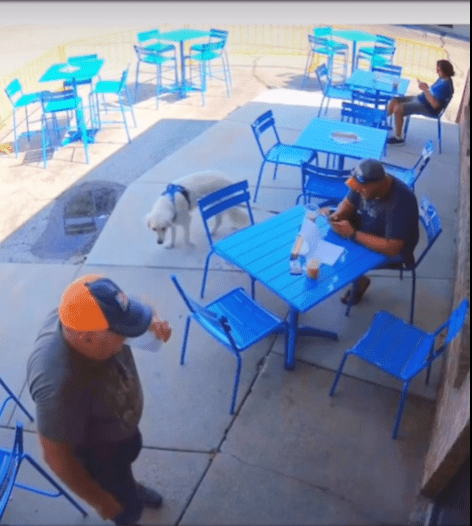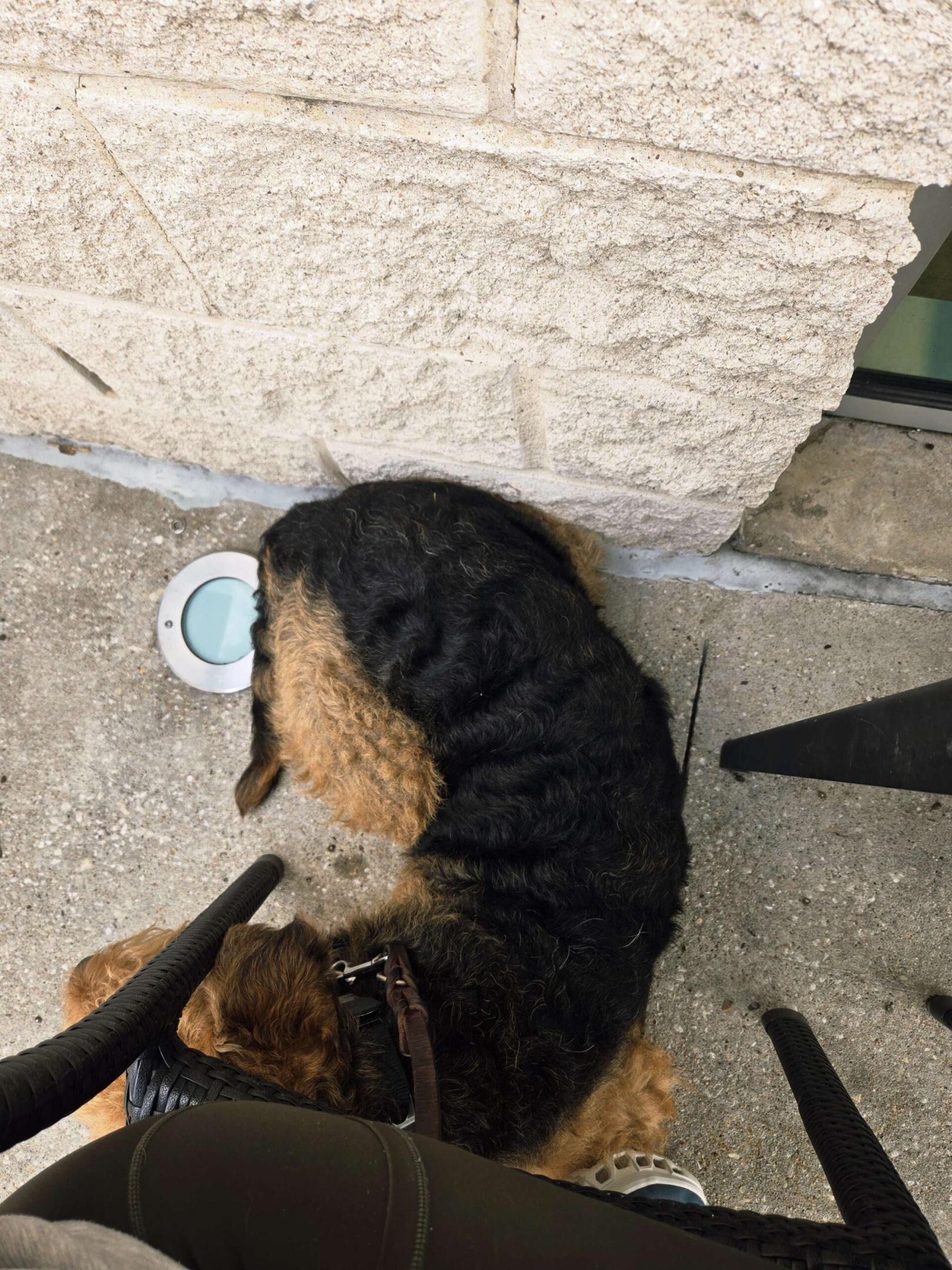This video made the rounds on the internet recently, and we felt it was a great opportunity to discuss the value of working The Long Down exercise with your dog, especially if you have the dream of a pleasant morning coffee at your local cafe with your dog without causing this level of chaos! If Otto’s owner had practiced the Long Down with him, they could have avoided this disaster and what was honestly probably a very traumatic experience for the dog. We owe it to our dogs to prepare them for the situations we will put them into as much as possible.



The Long Down is one of the foundational exercises we teach all of our dogs at Leash Free Living – some might have heard of this exercise referred to as “Sitting on the Dog”, but we decided “Long Down” was better, since the other name gave people images of actually sitting on their dog!
The basic rules of the exercise are described here.
But the common question from new clients, and even some experienced dog trainers who are new to the exercise is, “Why? What exactly is my dog supposed to be learning if I’m not telling him what to do, or offering him a reward when he does it?”
The short answer is that the goal of this exercise is not to teach a specific behavior – if we just wanted a dog to go to their bed, lie down on command, or stay put in a specific location, we have exercises for that — they’re called Place, Down, and Stay. But those are formal exercises that are shaped, taught, named, and proofed. The dog does them on command, but that requires that they wait for you to tell them what to do.
While it’s lovely to have a dog who listens to “down” and “stay” when you tell them to, what most of us want is a dog who also “reads the room” and adjusts their energy level and expectations based on what we are doing. If we’re chilling on the couch, we’d like the dog to snuggle up and relax with us, too. If we’re at the outdoor cafe with our pups after a morning walk, enjoying a coffee, you’d like your dog to be calm and patiently lying down at your feet under the table, out of the way of foot traffic, without having to constantly micromanage their behavior. Or upend the entire table, as the case with poor Otto.
What we want is for the dog to SELF-REGULATE. This is one of the unsung benefits of basic obedience training – your wild, hyper, impulsive, anxious, or reactive dog learns to better manage their emotional balance while you learn to provide the structure and leadership that guides them. The cool thing about the Long Down is that you can start it on Day 1 with pretty much any dog of any age, and start making positive gains in these areas immediately!
So, the end goal of The Long Down is not that your dog should automatically trot over and lie down by your side every time you sit in a chair – it’s not that sort of command. What we are instilling is patience, relaxation, and resignation to being a little bored sometimes. By presenting the dog with choices but only allowing one result to work out to their benefit, they will learn to access that relaxation quicker and quicker through repetition. And because they come to that conclusion themselves, they own the answer in deeper way. This is why we recommend practicing this exercise daily, if you can. The dog needs time and experience to explore all the options and finally accept that relaxing at your side is best.
To do this successfully, it’s important that you don’t offer distractions or entertainment for the dog during the long down – no chews, no toys, no petting, no treats. The dog must figure out on their own that pestering you, whining, barking, and otherwise trying to make something happen is fruitless. Eventually they will lie down and relax – it might take awhile, but they all will lie down eventually. Then you start your timer. You know you’ve succeeded at instilling the right attitude when you sit in your chair with your dog for the Long Down exercise and you are able to start the 30 minute timer almost immediately because the dog is that quick to relax and lie down (“Oh, it’s this again. Might as well take a nap, I’ll be here for awhile”). It’s very important that you do not end the Long Down when the dog is standing/sitting up or fussing at you, or they will learn that it’s not relaxation and resignation that ends the exercise eventually, but pestering you into action.
I used writing this blog post as an opportunity to practice the Long Down with my dog at the local Starbucks. Like a lot of terriers, he is a busy-minded, impulsive guy who likes to be entertained. While he’s pretty good at settling and finding his “off switch”, even he will take some time to finally lie down in new situations, which is why it’s beneficial to work this exercise with him on a regular basis.


We all love to share our lives without dogs as much as possible, and in our experience the Long Down is one of the simplest, most impactful skills to improve your quality of life with your pup alongside basic obedience training. If you’d like to practice your dog’s Long Down skills in public, join us for one of our weekend Yappy Hours, Ice Cream Socials, or coffee meetups – just keep an eye on our Facebook events page or our monthly events email for information on upcoming social events for our training clients – because Trained Dogs Have More Fun!

